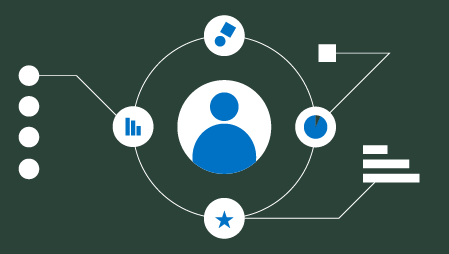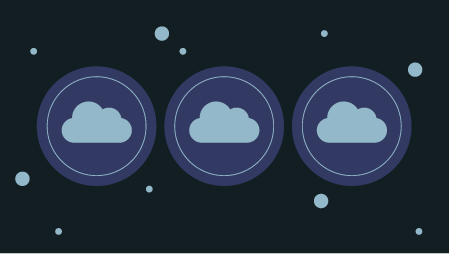Cloud is recognized as facilitating “speed-to-market” – and for its ability to drive business agility. This is because cloud supports rapid experimentation and innovation by allowing companies to quickly try and even adopt new solutions without significant up-front costs. The #Cloud can be a highly agile wrapper around different systems, different behavior and bringing it all together in an engagement cycle. By changing the way people interact with technology, cloud enables new forms of consumer engagement, expand collaboration across the value chain and bring innovation to companies’ core business models.

Gartner listed cloud computing as one of the top technology’s investments in the next 5 years as showing on the chart below:
Types of Cloud Computing
- Public Cloud: In Public Cloud, the computing infrastructure is hosted by the cloud vendor at the vendor’s premises. The customer has no visibility and control over where the computing infrastructure is hosted. The computing infrastructure is shared between any organizations.
- Private Cloud: The computing infrastructure is dedicated to a particular organization and not shared with other organizations. Private Clouds are more expensive and more secure when compared to Public Clouds. Private Cloud is what used to be called your company network.
- Hybrid Cloud: Organizations may host critical applications on Private Clouds and applications with relatively fewer security concerns on the Public Cloud. The usage of both Private and Public Clouds together is called Hybrid Cloud.
With all this in mind and the reality of cloud computing impacting businesses in all aspects and at all levels, there are myths surrounding cloud computing and clouding the reality of the cloud:
Myth # 1: It is only for tech companies: Nothing is far from the truth as this myth, any company in the horizontal and vertical markets can use it including no matter what is the size.
Myth # 2: Security is the biggest risk: Security measures used by well-known cloud vendors are often better than their clients; the cloud vendors have the resources and the skills to keep it up to date.
Myth # 3: Everything works better in the Cloud: Except old applications that were designed to run on dedicated servers, often difficult to run on the cloud.
Myth # 4: It is always cheaper to run in the Cloud: It is not always cheaper to run on the cloud, but it can often be more cost efficient. Cloud works best for variable demands and workloads, where you have high demand at times but lower demand at others.
Myth # 5: Cloud is harmful to the environment: There’s no question that data centers consume huge amounts of energy. But when businesses move from on-site facilities to consolidated cloud data centers, it saves energy and cuts pollution.
Myth # 6: Cloud costs jobs: Instead of taking jobs it is, in fact, creating them, industry experts claimed that by the end of 2015 cloud computing have created more than 13 million jobs worldwide. It required a host of cloud-savvy experts whose skills and knowledge will maintain and strengthen growth and development.
Myth # 7: Migrating into the Cloud is more hassle than it is worth: If you work in partnership with a trusted and experienced hosting provider it’s a seamless process. It can all happen very quickly with minimal downtime.
Myth # 8: Cloud Is Not for Mission-Critical Use: Cloud computing can be used for all aspect of business including Mission-Critical applications for many reasons including less downtime, and auto backup.
Myth # 9: Cloud is Virtualization: Virtualization is software that manipulates hardware, while cloud computing refers to a service that results from that manipulation.
Myth # 10: I’ll be caught by Vendor ‘lock in’: This is true only to the same extent of on-premise, traditional software. There would be nothing to stop businesses building their own applications and deal with more than one vendor.
The Promise of Cloud Computing
Understanding what is next for cloud computing is crucial for businesses at all levels because the cloud isn’t just for techies anymore. Managers are responding to the real opportunities that the cloud offers to develop new business models, forge closer ties with customers, and use the expertise of employees and partners. From a technology that was initially adopted for efficiency and cost savings, the cloud has emerged as a powerhouse of innovation throughout organizations.
Cloud computing is here to stay and the numbers are supporting that:
- 75% of decision makers use the cloud in their business
- 94% of IT managers reported improvements in security with the adoption of the cloud
- 75% of business reported improvements in the availability of their services
- 91% of SMB used cloud services to satisfy compliance requirements
- Spending on Cloud Computing never slow down, with 183 Billion in 2015
The next-generation of cloud computing will deliver value to the business faster by automating everything from request to deployment and configuration — and do so up and down the stack and across the entire infrastructure. Cloud computing is part of the “Third Platform” according to IDC along with Mobility, Big Data Analytics, and Social business, that explains why many businesses adopted the cloud to create innovative industry solutions. Now cloud computing is moving the bar higher with the Internet of Things (IoT) which is built on the cloud for the cloud.



